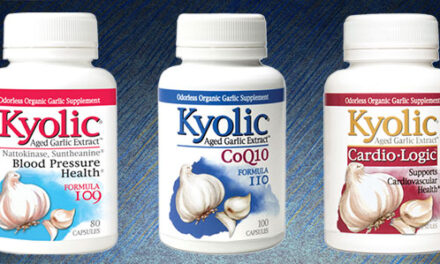Omega-3 fatty acids (O3FA) are well-known for their role in human health and wellness—and there are various sources of O3FA, including fish oils (i.e. fish body oils), krill oil and algal oils. But there is another “old school” source of O3FA that has been overlooked in recent times: cod liver oil. Now if you’re wondering why I’m taking the time to talk about a product that your grandmother or great-grandmother probably used, the reason (primarily) has to do with inflammation.
About Inflammation
Let’s start with a brief review about inflammation, a useful natural reaction that the body has in response to injury and certain other conditions. Chronic inflammation, however, can be more destructive than beneficial and is a major component in many human diseases. Furthermore, it must be understood that chronic inflammation isn’t just associated with disease states. In fact, higher intakes of red and processed meats, sweets, desserts, French fries, and refined grains are associated with experiencing more inflammation,1 as is exposure to colder temperatures (i.e. colder climates).2
Since prolonged inflammation is detrimental to the host, higher organisms have evolved protective mechanisms to ensure resolution of the inflammatory response in a limited and specific time-and space-manner. Once thought as a mere passive process of dilution of inflammation, resolution is today envisioned as a highly orchestrated process coordinated by a complex regulatory network of cells and mediators.3
Pro-resolving Mediators
Among the molecules that facilitate resolution of inflammation, resolvins, protectins, and maresins produced from O3FA are the lipid mediators which are particularly important. These internally produced anti-inflammatory and pro-resolving mediators counteract the effects of proinflammatory signaling systems and act as “braking signals” of the persistent vicious cycle leading to unremitting inflammation.
In fact, the same pro-inflammatory factors that initially trigger the inflammatory response also signal the termination of inflammation by stimulating the biosynthesis of pro-resolving mediators. Resolvins, protectins and maresins and have been shown to reduce airway inflammation, dermal inflammation colitis, arthritis, and postoperative pain. Studies have shown that these mediators increase with time during the inflammatory process.4,5,6
DHA The most well-known O3FA are eicosapentaenoic acid (EPA) and docosahexaenoic acid (DHA). While these two O3FA can be used to generate resolvins, there is another O3FA called docosapentaenoic acid (DPA), which is a particularly effective precursor to different resolvins.7 DPA is an intermediate in the biosynthesis of DHA from EPA. In any case, DPA is not always seen in omega-3 fatty acid products. It can, however, be found in some cod liver oil products.
Cod Liver Oil And Inflammation
It should be noted that cod liver oil is a natural source of vitamins A and D, in addition to O3FA. This is significant since maintaining healthy vitamin D levels is necessary for supporting cardiovascular health,8,9,10,11 and vitamin D plays an important role in healthy skin and in regulating a healthy immune system.12 Furthermore, some cod liver oil products are a direct source of pro-resolving mediators. Not surprisingly, cod liver oil has shown value for its anti-inflammatory effects.
A study13 was conducted to compare the effects of supplementation with either sunflower oil (source of omega-6) or cod liver oil (source of omega-3) oil, in rates with inflammatory colitis. Inflammatory markers increased in rats fed sunflower oil but was blunted in rats fed cod liver oil. In fed cod liver oil group, the damage score was markedly reduced by day 30, and inflammation and ulceration were almost absent by day 50.
A 9-month, double-blind, placebo-controlled, randomized human study14 was conducted in 58 patients with rheumatoid arthritis (RA) to determine whether cod liver oil supplementation would help reduce daily NSAID (pain medication) requirement. Patients took either 10 g of cod liver oil containing or identical placebo capsules. Documentation of NSAID daily requirement, clinical and laboratory parameters of RA disease activity, and safety checks were done at 0, 4, 12, 24 and 36 weeks. At 12 weeks, patients were instructed to gradually reduce, and if possible, stop their NSAID intake. Results were that 39 percent of patients in the cod liver oil group and 10 percent of patients in the placebo group were able to reduce their daily NSAID requirement by more than 30 percent. Researchers concluded that cod liver oil supplements containing n-3 fatty acids can be used as NSAID-sparing agents in RA.
Cod Liver Oil and Beauty
In addition to inflammation, cod liver oil may also have a “beauty from within” application. Here’s the rationale. O3FA have been shown to help reduce the visible signs of aging, and support cell rejuvenation. In one study, a diet providing as little as 295 mg/day of EPA was shown to decrease the risk in photoaging (i.e. more rapidly aged skin due to sun exposure) in women.15 In addition, vitamin D has been shown to play an important role in maintaining healthy hair due to its relationship with vitamin D receptors in hair follicles.16,17,18 Given that cod liver oil is a natural source of both O3FA and vitamin D, it may serve as an ideal supplement for the skin and hair.
Conclusion
Due to its naturally occurring EPA, DHA, DPA, and pro-resolving mediators, cod liver oil is an ideal supplement for helping to reduce inflammation. Furthermore, it is a natural source of vitamins A and D; and may also have “beauty from within” applications. That being said, if you’re going to use a cod liver oil supplement, it is important to use a clean product. I suggest looking for supplements from cod from Alaskan waters (a more pristine area) that are line-caught and flash-frozen to preserve freshness.
References:
- Lopez-Garcia E, Schulze MB, Fung TT, Meigs JB, Rifai N, Manson JE, Hu FB. Major dietary patterns are related to plasma concentrations of markers of inflammation and endothelial dysfunction. Am J Clin Nutr. 2004 Oct;80(4):1029–35.
- Halonen JI, Zanobetti A, Sparrow D, Vokonas PS, Schwartz J. Associations between outdoor temperature and markers of inflammation: a cohort study. Environ Health. 2010 Jul 23;9:42.
- Clària J. Resolution of Acute Inflammation and the Role of Lipid Mediators. Scientific World Journal. 2010; 10:1553–5.
- Recchiuti A, Serhan CN. Pro-resolving lipid mediators (SPMs) and their actions in regulating miRNA in novel resolution circuits in inflammation. Front Immunol. 2012 Oct 22;3:298.
- Serhan CN. Novel Pro-Resolving Lipid Mediators in Inflammation Are Leads for Resolution Physiology. Nature. 2014 Jun 5; 510(7503): 92–101.
- Spite M, Serhan CN. Novel lipid mediators promote resolution of acute inflammation: impact of aspirin and statins. Circ Res. 2010 November 12; 107(10): 1170–84.
- Primdahl KG, Aursnes M, Walker ME, Colas RA, Serhan CN, Dalli J, Hansen TV, Vik A. Synthesis of 13(R)-Hydroxy- 7Z,10Z,13R,14E,16Z,19Z Docosapentaenoic Acid (13R-HDPA) and Its Biosynthetic Conversion to the 13-Series Resolvins. J Nat Prod. 2016 Oct 28;79(10):2693–2702.
- Wang TJ, Pencina MJ, Booth SL, et al. Vitamin D deficiency and risk of cardiovascular disease. Circulation 2008;117;503–11.
- Dobnig H, Pilz S, Scharnagl H, et al. Independent association of low serum 25-hydroxyvitamin D and 1,25-dihydroxyvitamin D levels with all-cause and cardiovascular mortality. Arch Intern Med 2008;168:1340–49.
- Giovannucci E, Liu Y, Hollis BW, Rimm EB. 25-hydroxyvitamin D and risk of myocardial infarction in men. Arch Intern Med 2008;168:1174–80.
- Martins D, Wolf M, Pan D, et al. Prevalence of cardiovascular risk factors and the serum levels of 25-hydroxyvitamin D in the United States. Arch Intern Med 2007;167:1159–65.
- Institute of Medicine. Food and Nutrition Board. Vitamin A. Dietary Reference Intakes for Vitamin A, Vitamin K, Arsenic, Boron, Chromium, Copper, Iodine, Iron, Manganese, Molybdenum, Nickel, Silicon, Vanadium, and Zinc. National Academy Press, Washington, DC; 2001:82–161.
- Vilaseca J, Salas A, Guarner F, Rodríguez R, Martínez M, Malagelada JR. Dietary fish oil reduces progression of chronic inflammatory lesions in a rat model of granulomatous colitis. Gut. 1990 May;31(5):539–44.
- Galarraga B, Ho M, Youssef HM, Hill A, McMahon H, Hall C, Ogston S, Nuki G, Belch JJ. Cod liver oil (n-3 fatty acids) as an nonsteroidal anti-inflammatory drug-sparing agent in rheumatoid arthritis. Rheumatology (Oxford). 2008 May;47(5):665–9.
- Latreille J, Kesse-Guyot E, Malvy D, Andreeva V, Galan P, Tschachler E, Hercberg S, Guinot C, Ezzedine K. Association between dietary intake of n-3 polyunsaturated fatty acids and severity of skin photoaging in a middle-aged Caucasian population. J Dermatol Sci. 2013 Dec;72(3):233–9.
- Daroach M1, Narang T, Saikia UN, Sachdeva N, Sendhil Kumaran M. Correlation of vitamin D and vitamin D receptor expression in patients with alopecia areata: a clinical paradigm. Int J Dermatol. 2018 Feb;57(2):217–222.
- Gerkowicz A, Chyl-Surdacka K, Krasowska D, Chodorowska G. The Role of Vitamin D in Non- Scarring Alopecia. Int J Mol Sci. 2017 Dec 7;18(12).
- Cheung EJ, Sink JR, English Iii JC. Vitamin and Mineral Deficiencies in Patients With Telogen Effluvium: A Retrospective Cross-Sectional Study. J Drugs Dermatol. 2016 Oct 1;15(10):1235–37.











